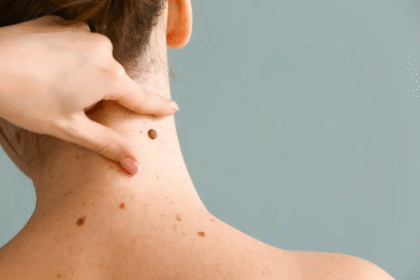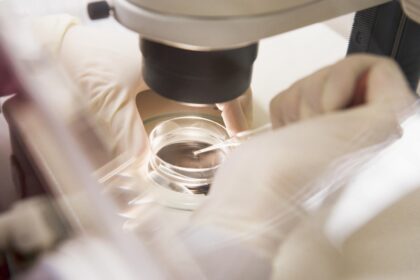Chronic wounds, surgical complications, and orthopedic injuries often take a toll on patients’ health and quality of life. For many, traditional treatments such as gauze dressings, ointments, or synthetic grafts are not enough to promote complete recovery. In the last decade, regenerative medicine has introduced advanced biologic therapies that go beyond covering a wound—they actively encourage healing at the cellular level. One of the most exciting of these innovations is the amniotic membrane allograft.
Derived from the placenta after healthy, full-term childbirths, amniotic tissue is packed with natural healing properties. Once processed into a sterile and safe medical product, it becomes a powerful treatment tool used by wound care specialists, surgeons, and orthopedic doctors across the world.
What Is an Amniotic Membrane Allograft?
An amniotic membrane allograft is a biologic material sourced from the innermost layer of the placenta, known as the amnion. During pregnancy, this tissue plays a vital role in protecting and nourishing the developing baby. After delivery, the amniotic membrane can be ethically donated by mothers who have consented to tissue donation.
Once collected, the membrane is carefully processed—either dehydrated, cryopreserved, or micronized—depending on its intended medical use. The result is a safe and versatile product that can be applied in many areas of medicine.
Unlike synthetic wound dressings that act as passive barriers, amniotic membrane allografts contain active biologic elements such as:
-
Collagen – the building block of skin and tissue repair
-
Growth factors – proteins that stimulate new cell formation
-
Cytokines – molecules that help regulate inflammation
-
Extracellular matrix (ECM) proteins – structural support for regenerating tissue
Together, these components make amniotic tissue an ideal choice for patients with slow-healing wounds or injuries.
How Amniotic Membrane Allografts Work
When applied to a wound, surgical incision, or injured tissue, an amniotic membrane allograft creates the optimal healing environment. Its natural properties allow it to:
-
Reduce inflammation – minimizing pain, swelling, and tissue irritation.
-
Protect against infection – acting as a barrier while delivering antimicrobial benefits.
-
Deliver growth factors – stimulating the body’s own cells to regenerate damaged tissue.
-
Promote angiogenesis – supporting the formation of new blood vessels for better circulation.
-
Prevent scar tissue – reducing fibrosis and improving functional recovery.
This combination of effects is why amniotic membrane allografts are especially useful for wounds that don’t respond well to standard treatments.
Medical Applications of Amniotic Membrane Allografts
The versatility of this therapy makes it a valuable option across multiple medical specialties. Common uses include:
1. Wound Care
Amniotic membrane allografts are highly effective for chronic wounds, such as:
-
Diabetic foot ulcers – a leading cause of amputation if untreated.
-
Venous leg ulcers – painful wounds caused by poor circulation.
-
Pressure sores – common in patients with limited mobility.
-
Burns – where infection control and scar reduction are critical.
These products help close wounds faster, lower the risk of infection, and reduce healthcare costs associated with long-term wound care.
2. Orthopedics and Sports Medicine
Surgeons use amniotic allografts to treat tendon injuries, ligament damage, and joint pain. The grafts support tissue repair, reduce inflammation, and speed recovery for athletes and active patients.
3. Ophthalmology
Amniotic membrane allografts are used in eye surgeries, particularly for corneal reconstruction. They help restore the ocular surface, reduce scarring, and improve vision outcomes.
4. Spinal and Nerve Surgery
In neurosurgery and spinal operations, allografts can help reduce scarring around delicate tissues, lowering the risk of complications and supporting smoother recovery.
5. General and Reconstructive Surgery
For complex surgical wounds or reconstructive procedures, amniotic allografts provide an added layer of healing support, reducing complications and encouraging faster closure.
Benefits of Amniotic Membrane Allografts
The growing adoption of amniotic membrane allografts is driven by the wide range of benefits they offer patients and healthcare providers.
Key Benefits for Patients
-
Faster healing times – enabling quicker return to daily life.
-
Reduced pain and swelling – due to anti-inflammatory properties.
-
Lower infection risk – providing natural antimicrobial protection.
-
Less scarring – helping wounds heal with better cosmetic and functional results.
-
Biocompatibility – low risk of rejection since the tissue integrates naturally with the body.
Benefits for Providers and Healthcare Systems
-
Ethical sourcing – derived from placental tissue donated after childbirth.
-
Cost-effective outcomes – by reducing the need for repeated wound care interventions.
-
Versatility – suitable for use across multiple medical fields.
The Future of Regenerative Medicine with Amniotic Allografts
The use of amniotic membrane allografts is part of a larger movement toward biologic therapies in healthcare. Instead of relying solely on synthetic materials or prolonged drug therapies, regenerative medicine focuses on harnessing the body’s natural healing potential.
With ongoing research and clinical studies, the applications of amniotic membrane allografts continue to grow. From wound healing to orthopedic care and ophthalmology, these biologic solutions are giving patients new hope—especially those who have struggled with chronic or non-healing conditions.
As more hospitals, clinics, and wound care centers adopt these treatments, amniotic membrane allografts are set to become a standard in advanced healing and regenerative care.




